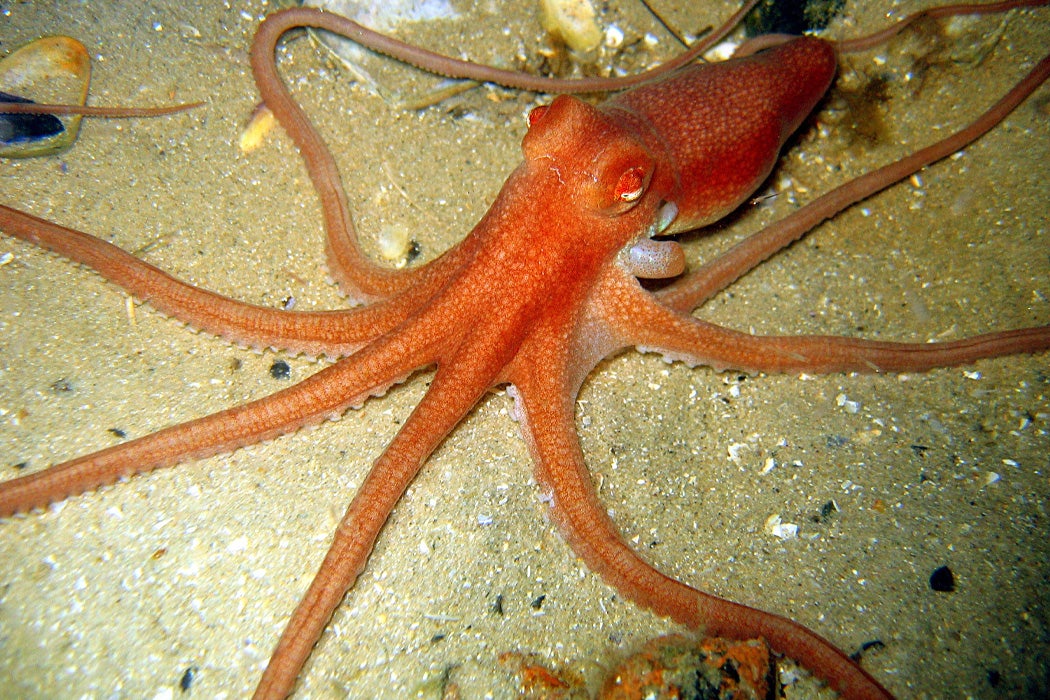Octopuses are legendary for their camouflage. Their amazing ability to disappear has allowed them to thrive despite soft bodies and few defenses. But what is an octopus to do when camouflage fails? Ask the southern sand octopus.
The southern sand octopus (Octopus kaurna) lives in sand flats around southern Australia and Tasmania. Unlike most octopuses, the sand octopus cannot change its color. Its soft, mostly bare habitat leaves few options for shelter. Octopuses have been known to burrow under the sand, using their arms to sweep the sediment aside, but they are always shallow-buried and remain in direct contact with the water in order to breathe.
According to zoologist Jasper Montana et al. in the journal Behaviour, however, the sand octopus has developed a method of burrowing that goes way beyond simply covering itself in sand.
First, the sand octopus uses its siphon to blast the sand beneath it with high-pressure jets of water. The blasts suspend the sand in water, so that the octopus is in essence making its own quicksand. It then sticks its arms into the sediment and pulls the rest of its body down into the quicksand. Using two arms, it makes a breathing shaft up to the water, and uses its other arms to push the sediment away from its body, creating a cozy subsurface burrow complete with air shaft.
Weekly Newsletter
If the octopus has less energy to expend, it can simply enter the unoccupied burrow of some other marine organism. If it encounters shells or rocks, the octopus will use its arms to dig mechanically. Burrowing speed depends on the coarseness of the sediments, but the whole process can be completed in a matter of seconds, perfect for a quick getaway.
It’s the last stage of the process, however, that might just be the most amazing. Once inside, the octopus uses its mucus as mortar, lining its burrow with the viscous goo to stick the sand grains together and help the burrow hold its shape. The reinforced sand can extend up to two centimeters away from the burrow itself, and holds its shape even when surrounding sand is washed away. It is the only true burrow construction behavior observed in a cephalopod, and it’s perfectly suited for the sand octopus’s barren environment.







